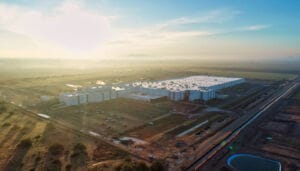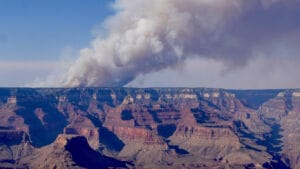Valley Partnership hosted development professionals to hear from state water policy leaders about the work being done to conserve the state’s water supplies and identify new sources. Here are highlights and five things to know about Arizona water heading into 2024:
“Arizona, California and Nevada were able to come together earlier [in 2023] to conserve 3 million acre-feet of Colorado River water through 2026 — that’s about 1 trillion gallons. And by the end of [2023], we are on track for more than 1 million acre-feet conserved in Lake Mead, bringing consumptive use in the lower basin states to around 5.8 million feet, the lowest level in 40 years … While these are critical and necessary steps in the short term to stabilize the system, we have to recognize that relying on drought dollars from the Inflation Reduction Act to pay users to leave water in the Colorado River is quite literally only buying time. What it doesn’t do is resolve questions over the long haul, and we can’t lose sight of that.”— U.S. Congressman Greg Stanton
“On one hand, we are absolutely in the midst of a huge impact of drought conditions. But [in 2023], we had a wet year in Arizona and for the Colorado River basin. Yet one good year does not change a 23-year drought. The good news is that we’ve been in a Tier 2a drought with Lake Mead based on the elevation of water, but the hydrological conditions have been so good that we’re back to a Tier 1 drought … This gives us some breathing room to continue to look at the next big things we want to focus on in Arizona.” — Ben Graff, partner at Quarles

“If you benefit from the Colorado River as a water user, you need to participate in the protection of the river and making it sustainable moving forward. I don’t care what piece of paper you have that says you have a better right to that water than someone else. There was the real possibility that reservoir levels could have dropped to such a low level that there might have been little to no water to satisfy those pieces of paper. If we don’t have a collaborative solution and get dictated to by the federal government — and they have the power to do that — the most likely place we’re going to be in is a court room in what I call litigation Armageddon, and it will be ugly.” — Tom Buschatzke, director of the Arizona Department of Water Resources
“2022 started with a strong monsoon and finished with a great winter. We actually filled the Salt River Project system to 100% capacity. We generate a few million acre-feet of water annually, with the average being about 750,000 acre-feet, which happens to be our average annual demand. We had to release about 700,000 acre-feet of water last year both on the Salt and Verde Rivers. That’s almost a whole year’s worth of demand on the system.” — Leslie Meyers, chief water executive and associate general manager of water resources for Salt River Project
“We have some incredible infrastructure in Arizona. But that doesn’t mean we don’t need more. Some individual communities need to build their infrastructure so they can move different water sources and have their treatment plants treat more than just Colorado River water. So many communities are making those investments now, and we have federal and state resources we’ve never had in the past. We, as Arizonans, will make this work. We have the ability and the water, but sometimes it’s not in the right place. I will say that we will likely have less Colorado River water in the future, but we can work with less. We just need the supply to be predictable, so we know what investments to make up for it.” — Brenda Burman, general manager of Central Arizona Project




